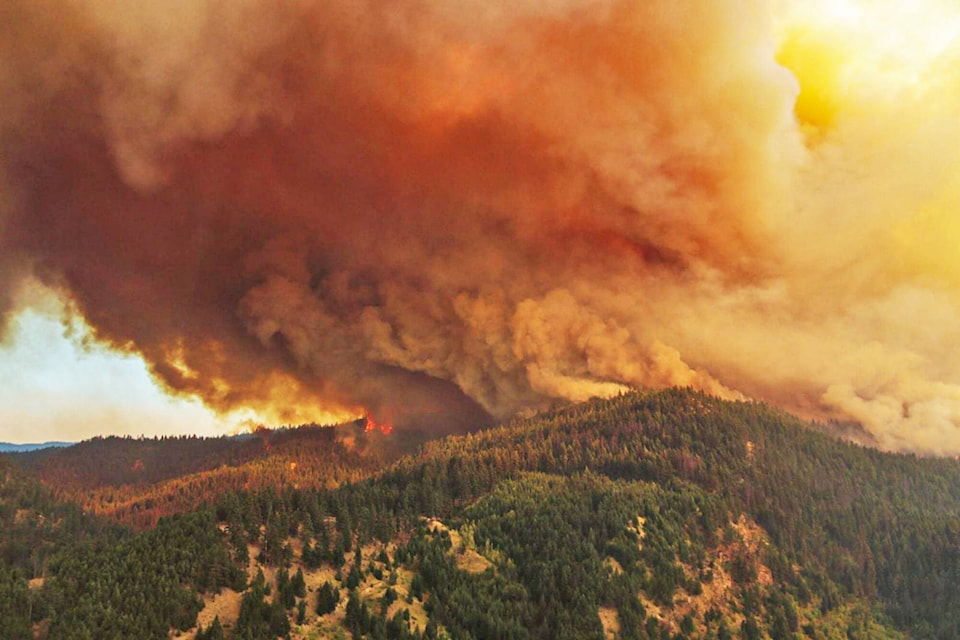By Jim Cooperman
Contributor
After this summer’s extreme heat, drought, smoke and wildfires, it is obvious that all predictions are off and all we can expect is the unexpected.
Most graphs that illustrate climate change show exponential lines that move increasingly upward, so the impacts will also be increasing in number and scope.
We can also no longer be smug by thinking the damages and deaths will be somewhere else, as it is now clear we are every bit as vulnerable in British Columbia and here in the Shuswap.
In the past, climate scientists predicted rising temperatures, more severe storms, water shortages and extreme precipitation events. There was nary a word about what could happen due to the arctic warming at a faster rate than the rest of the planet, until the heat dome settled over the Pacific Northwest. We now learn that higher temperatures in the far north make the jet stream unstable and instead of moving in a solid band around the earth, it is now fragmented and wobbles causing weather systems to stall.
Extreme weather now stalls for days, creating intense heat in some areas, and record rainfall deluges elsewhere. Just outside the boundary of this late June’s heat dome, there were areas of the central U.S. that received upwards of a foot of rain. That means the Shuswap could one day face similar massive rain showers, like the one over the eastern Rockies that flooded Calgary a few years ago.
Read more: Climate change made B.C., Alberta heat wave 150 times more likely, study concludes
Read more: Letter: North Okanagan-Shuswap MP urged to step up on climate change
Perhaps the worst part of the impacts occurring is that many of them result in feedback mechanisms that add yet more carbon to the atmosphere. Burnt forests produce more carbon and methane for years after the fires as the decaying fibre and lack of trees means less carbon is absorbed. The smoke settles on glaciers darkening the ice and snow causing more heat absorption that accelerates the melting.
For three out of the last five years, B.C. has experienced devastating wildfires covering over three million hectares, with intense smoke filling the valleys. If summers like these become the norm, it could pose serious consequences for the Shuswap economy based on tourism. As well, there will be long-term health impacts from the polluted air filling our lungs year after year, especially for those who did not mask up when the air quality was terrible.
The drought resulted in enormous losses for farmers in the prairies, which will result in grain shortages. Entire herds of cattle had to be sold due to the lack of feed and water. In California, where many reservoirs are nearly empty, farmers had to give up. The result will be a rise in food prices and likely food shortages this coming winter and beyond.
No longer are we just reading about death and destruction in faraway Third World countries, or the hurricane, tornado and wildfire plagued-U.S., now that 569 people perished from the heat in this province. The entire town of Lytton was reduced to ashes after it experienced a record-breaking temperature for the province, and another community here in the Shuswap, Monte Lake, was also seriously scorched. Fires also nearly destroyed two of the Shuswap’s premier parks, Momich Lake, which had already burned in 2009, and Anstey-Hunakwa.
Fortunately, homes were spared in Sicamous and along Mara Lake from the Two-Mile fire, but parts of the steep hillsides were seriously burned, especially former clearcuts. This hillside has seen multiple landslides after heavy rain events, and with many trees now reduced to ashes, there could be more slides in upcoming years.
As efforts to mitigate climate change by reducing emissions continue to fizzle, the planet is posed to continue to get warmer for many decades to come. The focus must now be on survival and the only way to achieve it is through improved adaptation measures. The provincial government is aware of this need, but its efforts to date have been insufficient and few of the recommendations from wildfire reports have been followed. Clearly, there is a need for local governments to take up the slack and make concerted efforts to help ensure the Shuswap is better able to weather the future.
Like us on Facebook and follow us on Twitter
Sign up for our newsletter to get Salmon Arm stories in your inbox every morning.
